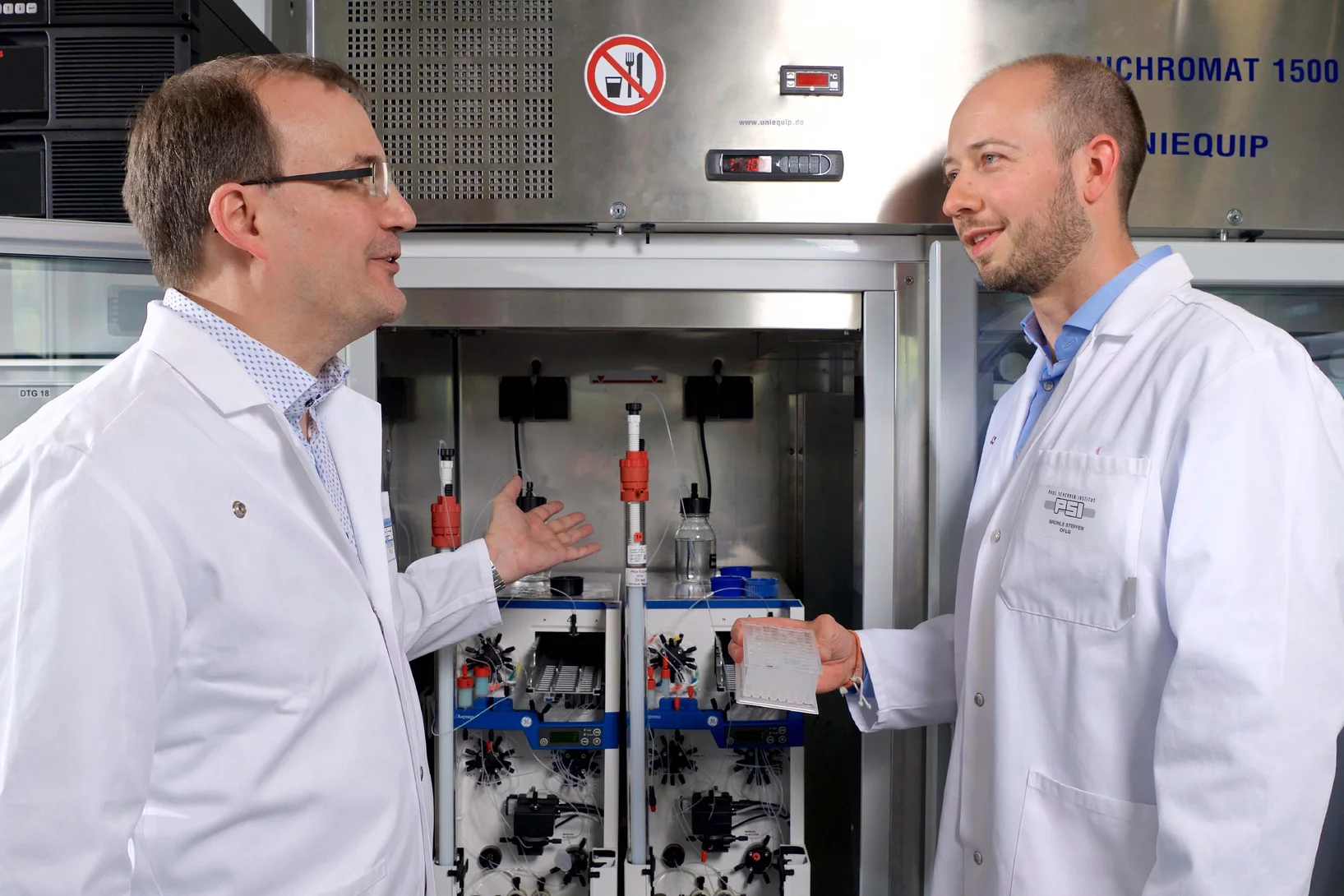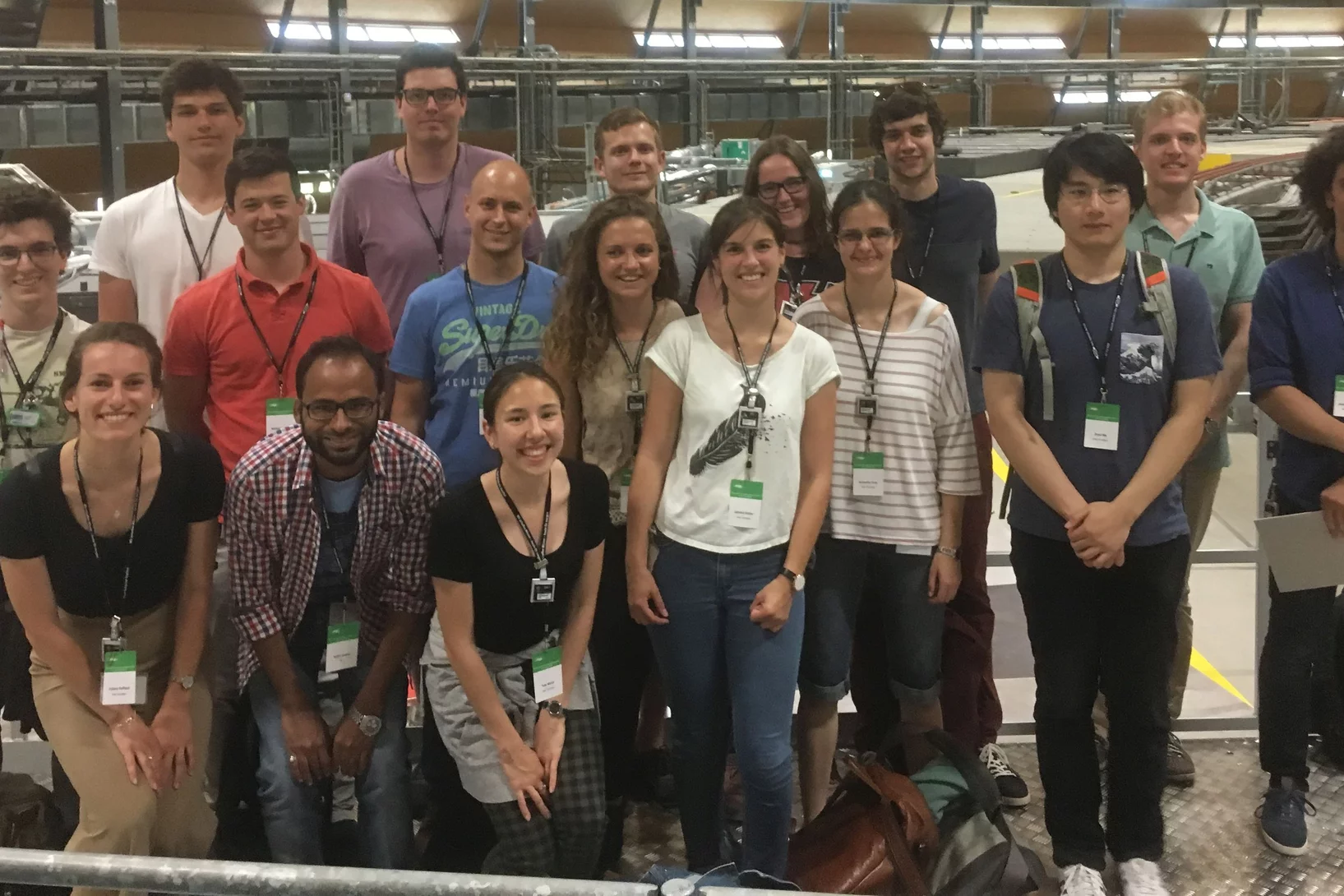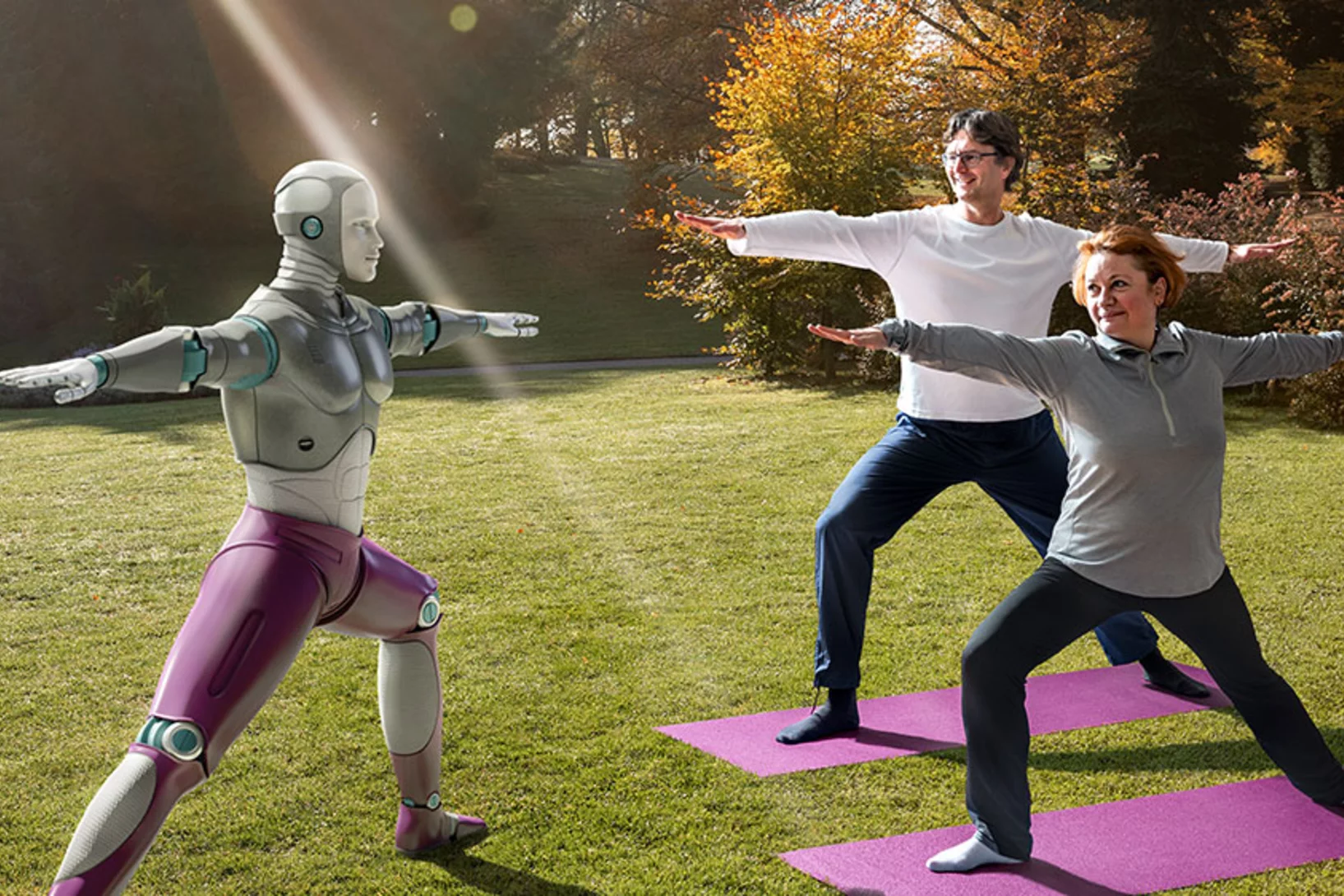Faserverstärkte Verbundstoffe schnell und präzise durchleuchten
Forschende des Paul Scherrer Instituts PSI haben eine neues Verfahren entwickelt, mit dem sich faserverstärkte Verbundwerkstoffe präzise durchleuchten lassen. Das könnte helfen, bessere Materialien mit neuartigen Eigenschaften zu entwickeln.
New 6M€ European grant awarded to ExPaNDS to drive open access data
A new 6M€ grant is being launched for the Photon and Neutron Data Services (ExPaNDS) to come together and work under the European Open Science Cloud (EOSC). This ambitious project will create enormous opportunities for scientific communities, and through their findings for humankind worldwide. It aims to publish and map the data behind the thousands of successful published scientific papers generated by Europe’s Photon and Neutron Research Infrastructures (PaN RIs) – which every year create petabytes of data – and make it available to all.
Forschen und Tüfteln – Der SwissFEL im Jahr 2019
Die neueste Grossforschungsanlage am PSI, der SwissFEL, ist fertiggestellt. Im Januar 2019 begann der Regelbetrieb. Henrik Lemke, Leiter der Gruppe SwissFEL Bernina, zieht eine erste Zwischenbilanz.
Metastasierung von Tumoren verhindern
Forschende des Paul Scherrer Instituts PSI sind gemeinsam mit Kollegen des Pharmaunternehmens F. Hoffmann-La Roche AG der Entwicklung eines Wirkstoffes gegen die Metastasierung von bestimmten Krebsarten einen wichtigen Schritt nähergekommen. Mithilfe der Synchrotron Lichtquelle Schweiz SLS entschlüsselten sie die Struktur eines Rezeptors, der entscheidend an der Wanderung von Krebszellen beteiligt ist.
Weyl-Fermionen in einer weiteren Materialklasse entdeckt
Eine besondere Art von Teilchen, sogenannte Weyl-Fermionen, waren bislang nur in bestimmten nicht-magnetischen Materialien gefunden worden. Jetzt aber haben PSI-Forschende sie erstmals auch in einem besonderen paramagnetischen Material experimentell nachgewiesen.
Molekulare Energiemaschine als Filmstar
Forschende des PSI haben mithilfe der Synchrotron Lichtquelle Schweiz SLS eine molekulare Energiemaschine in Bewegung aufgenommen und so aufgedeckt, wie die Energiegewinnung an Zellmembranen funktioniert. Dazu entwickelten sie eine neue Untersuchungsmethode, die die Analyse von zellulären Vorgängen deutlich effektiver machen könnte als bislang.
First demonstration of a Germanium laser
Scientist at the Paul Scherrer Institut and ETH Zürich, with colleagues from CEA Grenoble, have demonstrated and characterized a technology that, for the first time, yields lasing from strained elemental Germanium. This achievement underlines PSI’s leading role in the development of Silicon-compatible laser light sources.
PSI School for Master Degree Students - Introducing Photons, Neutrons and Muons for Condensed Matter Physics and Materials Science
From 17 – 21 June 2019 the Neutron and Muon Division (NUM) and the Photon Science Division (PSD) of PSI hosted 18 Master Degree students of physics, chemistry, materials and interdisciplinary science, as well as nuclear engineering to provide an introduction to the characterization of materials with large scale facilities like SINQ, SμS, SLS and SwissFEL. The course taught a basic understanding of how photons, neutrons and muons interact with matter, and how this knowledge can be used to solve specific problems in materials research.
Details of the program can be found at http://indico.psi.ch/event/PSImasterschool
First serial femtosecond crystallography experiment using SwissFEL’s large bandwidth X-ray pulses
The typical mode of operation at XFEL facilities uses the so-called self-amplified spontaneous emission (SASE) process to generate the short, bright X-ray pulses. This mode of operation is stochastic in nature, causing some variance in intensity and spectrum on a shot-to-shot basis, which makes certain types of crystallographic measurements much more challenging.
Neues Material mit magnetischem Formgedächtnis
PSI-Forschende haben ein Material entwickelt, dessen Formgedächtnis durch Magnetismus aktiviert wird. Anwendungsgebiete für diese neue Art von Verbundstoffen sind beispielsweise Medizin, Raumfahrt, Elektronik oder Robotik.
Neuartiges Material zeigt auch neue Quasiteilchen
Forschende des PSI haben an der Synchrotron Lichtquelle Schweiz SLS ein neuartiges kristallines Material untersucht, das bislang nie gesehene elektronische Eigenschaften zeigt. Unter anderem konnten sie eine neue Sorte Quasiteilchen nachweisen: sogenannte Rarita-Schwinger-Fermionen.
HERCULES school 2019 at SLS
In the week of April 1-5 PSI welcomes 20 PhD students and postdocs taking part in the European HERCULES 2019 school on Neutron and Synchrotron Radiation. They will attend lectures and perform two days of practical courses at several beam lines of the Swiss Light Source.
Ein Kompass, der nach Westen zeigt
Forschende des PSI haben mithilfe der Synchrotron Lichtquelle Schweiz SLS ein neues Phänomen des Magnetismus entdeckt. Dabei verhalten sich bestimmte Atomgruppen wie ein Kompass, der nach Westen zeigt. Damit könnten Computer wesentlich leistungsfähiger werden.
Towards X-ray Transient Grating Spectroscopy at SwissFEL
The high brilliance of new X-ray sources such as X-ray Free Electron Laser opens the way to non-linear spectroscopies. These techniques can probe ultrafast matter dynamics that would otherwise be inaccessible. One of these techniques, Transient Grating, involves the creation of a transient excitation grating by crossing X-ray beams on the sample. Scientists at PSI have realized a demonstration of such crossing by using an innovative approach well suited for the hard X-ray regime.
Elektronen zuschauen und Bits anknipsen
Kleiner, schneller und vor allem energieeffizienter soll die Elektronik werden. Auch in mehreren Forschungsgruppen am PSI sind diese Themen präsent. Von schrittweisen Verbesserungen bis zum kompletten Umdenken – wer tüftelt derzeit woran?
Virtuelle Linse verbessert Röntgenmikroskopie
Eine von PSI-Forschenden neu entwickelte Methode macht Röntgenbilder von Materialien noch besser. Die Forschenden bewegten dafür eine optische Linse und nahmen dabei Einzelbilder auf. Mit Hilfe von Computeralgorithmen errechneten sie daraus ein Gesamtbild.
«Jetzt ist es Zeit für etwas Neues»
Macht man elektronische Bauteile kleiner, werden sie leider heisser. Auch ist bald die Grenze der technisch machbaren Verkleinerung erreicht. Am PSI arbeiten Gabriel Aeppli und Christian Rüegg an grundlegend neuen, physikalischen Lösungen für bessere Rechner und Datenspeicher.
Dr Yasin Ekinci elected as Fellow of SPIE
Dr. Yasin Ekinci, Head of the Advanced Lithography and Metrology Group and ad interim Head of the Laboratory for Micro and Nanotechnology, has been elected to the grade of Fellow of The International Society for Optics and Photonics (SPIE).
SESAME beamline for tomography project (BEATS) is launched
On 1st January 2019, the European Horizon 2020 project BEAmline for Tomography at SESAME (BEATS) was launched with the objective to design, procure, construct and commission a beamline for hard X-ray full-field tomography at the SESAME synchrotron in Jordan. The European grant is worth 6 million euros and will span a four-year period from beginning 2019 to end 2022.
Dr Mirjam van Daalen appointed as Swiss ESFRI delegate
Dr. Mirjam van Daalen Chief of staff of the Photon Science Division, was mandated on the 1st of January 2019, by the State Secretariat for Education, Research and Innovation SERI as a member of the Swiss Delegation to the European Science Forum on Research Infrastructures ESFRI https://www.esfri.eu/.
First femtosecond protein pump-probe measurements at SwissFEL
A major milestone in the commissioning of SwissFEL has been reached: the first pump-probe experiments on proteins have been successfully carried out. Crystals of several retinal-binding proteins were delivered in a viscous jet system and a femtosecond laser was used to start the isomerization reaction. Microsecond to sub-picosecond snapshots were then collected, catching the retinal proteins shortly after isomerization of the chromophore.
2018 Innovation Award on Synchrotron Radiation
The Innovation Award on Synchrotron Radiation 2018 went to Dr. Christian David, also from the Paul Scherrer Institute, and to Prof. Alexei Erko, who recently moved from the HZB to the Institute for Applied Photonics (IAP) in Berlin-Adlershof.
EU bewilligt 14 Millionen für Schweizer Forschende
Ein Team mit drei Forschenden aus dem ETH-Bereich wurde mit einem prestigeträchtigen EU-Förderpreis ausgezeichnet. Heute erhielten sie den von der EU unterzeichneten Vertrag zur Bestätigung der ausserordentlich hohen Finanzierung in Höhe von 14 Millionen Euro. Damit werden sie Quanteneffekte untersuchen, die das Rückgrat der Elektronik der Zukunft bilden könnten.
Helping chemists to understand degradation and stabilization of catalytic nanoporous gold structures
Catalytic materials are ubiquitously used in industrial processes to perform chemical reactions efficiently and in a sustainable manner. Nanoporous gold (npAu) is a monolithic sponge-like catalyst exhibiting a hierarchical structure with pores and connecting ligaments of typically 10 to 50 nm.
SwissFEL's First Call for Proposals
The first SwissFEL call for proposals took place, deadline for submission was the 15th of September. In this first call for proposals SwissFEL received overwhelming interest from the user community. A total of 47 proposals were submitted for the SwissFEL Alvra experimental station and 26 for the Bernina experimental station. The Proposal Review committee PRC took place on 18-19 October 2018.
Discrete Hall contribution of magnetic skyrmions
The reliable electrical detection of magnetic skyrmions is of fundamental importance for the application of such topological magnetic quasi-particles for data storage devices. Researchers in a joint collaboration between the University of Leeds and the PolLux endstation have investigated the electrical detection of isolated magnetic skyrmions in applications-relevant nanostructured devices, observing the presence of a strong skyrmion-dependent contribution to the Hall resistivity.
Demonstration of femtosecond X-ray pump X-ray probe diffraction on protein crystals
Our experiments, published in the September issue of Structural Dynamics, demonstrate the feasibility of time-resolved pump-multiprobe X-ray diffraction experiments on protein crystals using a split-and-delay setup which was temporarily installed at the LCLS X-ray Free Electron Laser.
Diamond: a gem for micro-optics
Our image of a diamond structure was published on the cover page of the September 2018 issue of the journal "Materials Today". The corresponding paper reports on the nano-frabrication of micro-optical elements in diamond.
Claire Donnelly dissertation research awards
Claire Donnelly, Mesoscopic Systems (ETH Zurich - PSI), was awarded the COMSOL SPS Award in Computational Physics, the Werner Meyer-Ilse Memorial Award, the ETH Medal for an outstanding doctoral thesis, and the American Physical Society Richard L. Greene Dissertation Award.
Auf dem Weg zu neuen Leistungstransistoren
Von einem neuartigen Leistungstransistor aus Galliumnitrid verspricht sich die Elektronikindustrie erhebliche Vorteile gegenüber derzeit eingesetzten Hochfrequenztransistoren. Doch noch sind eine Vielzahl grundlegender Eigenschaften des Materials unbekannt. Forschende am Paul Scherrer Institut PSI haben nun erstmals den Elektronen im angesagten Transistor beim Fliessen zugeschaut. Sie nutzten dafür eine der weltweit besten Quellen für weiches Röntgenlicht an der Synchrotron Lichtquelle Schweiz des PSI.





























